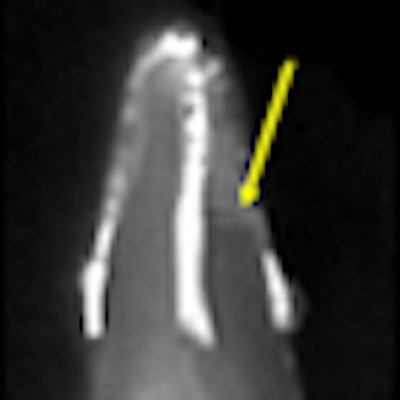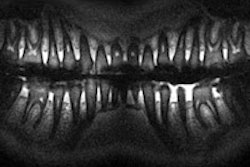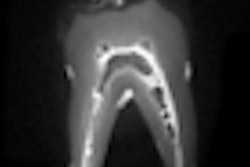
A new study in the Journal of Endodontics (JOE) further validates the viability of magnetic resonance imaging (MRI) for imaging hard and soft tissue in the oral cavity (June 2011, Vol. 37:6, pp. 745-752).
Researchers from the Center for Magnetic Resonance Research at the University of Minnesota presented findings from early experiments using MRI to image teeth and surrounding soft tissue at the International Association for Dental Research meeting in San Diego earlier this year. Those initial studies, which involved a new MRI technique -- sweep imaging with Fourier transform (SWIFT) -- found that SWIFT MRI achieved simultaneous visualization of enamel, dentin, and soft tissues in the pulp within clinically relevant scanning times and without the use of ionizing radiation.
The JOE study expands on that research, comparing MRI's diagnostic abilities with those of radiography, cone-beam CT, and histology. While MRI offers many diagnostic advantages, including the fact that it does not utilize ionizing radiation and can image soft-tissue structures with great precision and detail, it also has some challenges. The equipment can be claustrophobic to many patients, the imaging process is extremely loud and typically takes 30 to 60 minutes, and it requires several expensive and sensitive components.
 |
| A maxillary right central incisor with bilateral interproximal composite resin restorations and recurrent caries imaged with different modalities. Image courtesy of Djaudat Idiyatullin, Center for Magnetic Resonance Research. |
Unlike conventional MRI methods with large pulsed radiofrequency signals and signal detection from echoes, SWIFT is a fast, quiet MRI method that uses frequency-swept radiofrequency signals with almost instantaneous signal acquisition. In addition, SWIFT is more tolerant to static magnetic field inhomogeneity, according to its developers, and its short acquisition delay makes it relatively insensitive to motion.
For the JOE study, the research team, led by Djaudat Idiyatullin, PhD, imaged three in vitro teeth using a 9.4-tesla system with scanning times ranging from 100 seconds to 25 minutes and an in vivo subject for 10 minutes. These SWIFT images were then compared with 2D radiographs, 3D cone-beam CT images, gradient-echo MRIs, and histological samples.
"The application of x-ray-based three-dimensional diagnostic imaging is likely to increase in endodontics as cone-beam CT imaging systems become more available," the study authors noted. "However, besides exposure to radiation, such systems cannot simultaneously image calcified and noncalcified dental tissues, which is a significant limitation, particularly as regenerative endodontic procedures become more common in clinical practice."
The researchers found that the SWIFT images were able to identify the presence and extent of dental caries and fine structures of the teeth, including cracks and accessory canals, which are not visible with existing clinical radiography techniques. The dental anatomy was well-resolved, including enamel, dentin, and pulpal structures, they noted.
"Neither radiographic imaging modality could measure the extent of demineralization as well as SWIFT," the study authors wrote. "Moreover, the radiograph modalities do not reveal the early extension of the occlusal caries into the dentin."
In vivo SWIFT imaging of teeth is technically more challenging than in vitro for three reasons, the researchers noted: subject motion, proximity of intense signal from surrounding soft tissue, and an enlarged field-of-view. So they developed an intraoral coil with radiofrequency shielding on the back of the coil to minimize signals from the cheek.
"At present, the spatial resolution of the obtained in vivo SWIFT images is probably twofold coarser than what will be needed for clinical use," they wrote. "However, by further optimizing the coil configuration and applying a parallel imaging strategy, improvements in resolution should be achievable in the future."
Additional effort should be made to minimize motion artifacts, "which is an ongoing concern for all diagnostic imaging systems," they added.



















